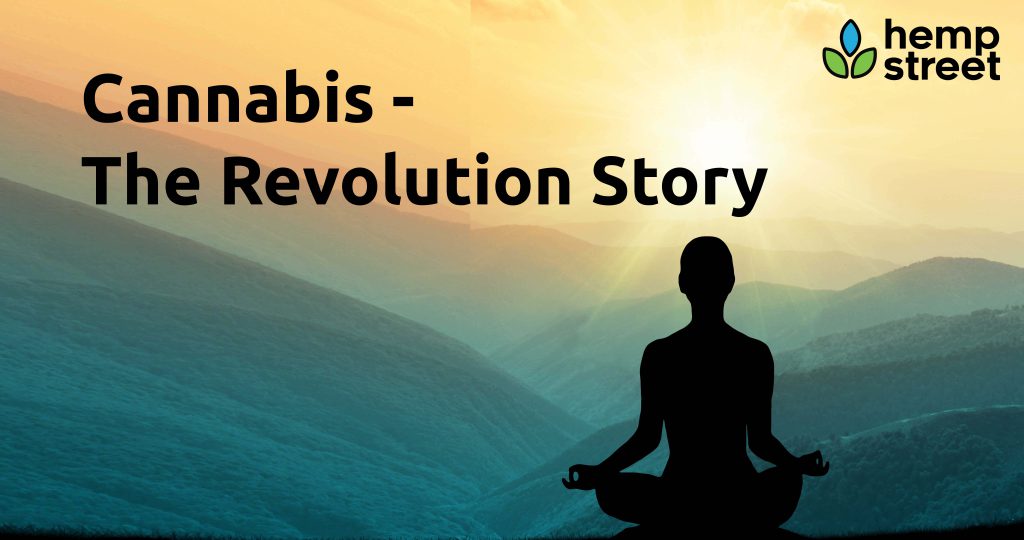The history of cannabis dates back to 500 BC in Asia, where this “healing” plant was discovered. A plant which has, since its discovery, served umpteen purposes constitutes of about 500 promising compounds. These compounds present in different parts of the plant, such as the stalk, seeds, and flowers, couple together to make cannabis a versatile and resourceful plant. Apart from the industrial uses, since the late 1800s, cannabis was also administered in pharmacies throughout Europe and the United States, for medicinal purposes.
Come the early 1970s, i.e., the 1961 Single Convention on Narcotic Drugs was the beginning of the downfall of the status of medicinal cannabis. However, antecedently, the Marijuana Tax Act of 1937 was passed. This act criminalized all but industrial uses of cannabis. The final nail on the coffin was the Controlled Substances Act of 1970, which grouped cannabis together with LSD, heroin, and ecstasy, as a Schedule I drug. Since then, the controversy and stigma around one of the compounds of the plant, tetrahydrocannabinol (THC), has covered the path of legalization of cannabis, with a lot of hurdles.
Cannabis advocates can now sigh a relief, as a United Nations Commission in November 2020 reclassifies cannabis as a less dangerous drug and thus, has moved a motion to ungroup cannabis from Schedule I drugs. Through this article, we explore this paradigm shift of the status of medicinal cannabis over the decades.
Then vs Now: Perception of Cannabis
It is but evident, how the tag of Schedule I drug has begotten an illicit cannabis market that trades and deals with various categories of cannabis. With a decision from a global organizational body such as the UN, this is a marked victory for cannabis defenders. A given effect of this decision would be the uprooting of the enormous black market that has taken ground since the consumption and trade of cannabis as raw material for medicinal purposes was criminalized. The compelling factor behind the criminalization of cannabis was the presence of THC in cannabis. Academicians, researchers, and people, in general, two decades ago believed that cannabis was just another sort of distraction for the youth and a harmful social drug that the adults indulged in, for pleasure. This point of view, however, has changed tellingly. Let us see why.
The Manifestation of Medicinal Cannabis
With increasing results of experiments bringing out the medicinal qualities of cannabis, perception towards cannabis is going through a significant transition. Scientific results have proven the efficacy of cannabis as an aid in the treatment of several diseases such as Multiple Sclerosis, Bipolar Disease, glaucoma, and other epilepsy and seizure syndromes. Cannabidiol or CBD, the non-psychoactive cannabinoid in cannabis has the potential to do wonders in the medical industry.
The chemical composition of CBD and many other lesser-known cannabinoids present in cannabis are extremely efficient in relieving one suffering from chronic pain. The anti-inflammatory properties of cannabis help arthritis patients to a great extent. A consequential property of cannabis that has come to the fore in the recent past, is the ability of cannabis to alleviate anxiety and fight depression. Such plausible effects of medicinal cannabis, which were not discovered before the advent of the 21st century, have substantially contributed to the shifting of perception and attitude of the public towards cannabis.
Although it has been found that the potency of cannabis has risen from a mere 0.2-4% in the 1990s to more than 20% now, it is crucial to keep in mind the fact that with potency, safety has also risen hand-in-hand, due to the improved methods of research trials and lab testing.
Endnote
This metamorphosis from a drug consumed for pleasure to an essential medical cure, the transition of the applicability of cannabis has been monumental. This transition will open the gates for parallel transformation and establishment of a regulated cannabis market and allow the cannabis industry to add value to the country’s economy. Beyond the economy, this decision by the UN would also make possible the reach of medicinal cannabis to patients, who need it.
Dirk Heitepriem, vice president at Canopy Growth, a Canadian cannabis company, said “We hope this will empower more countries to create frameworks which allow patients in need to get access to treatment.” Having said that, the fight for the legalization of cannabis is far from over. With this decision paving the way for ample opportunities for medical research, we could now say that the battle to legalize cannabis has found firm ground.
References
https://medium.com/goingyellow/the-cannabis-revolution-high-times-in-society-b36d2513fbc U.N. Reclassifies Cannabis as a Less Dangerous Drug https://www.medicalmarijuanainc.com/then-and-now-how-the-cannabis-industry-changed-in-10-years/




